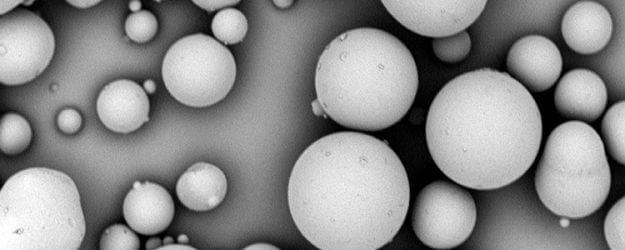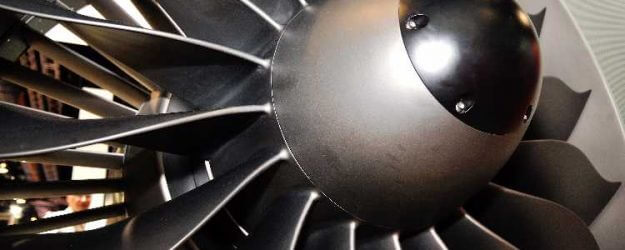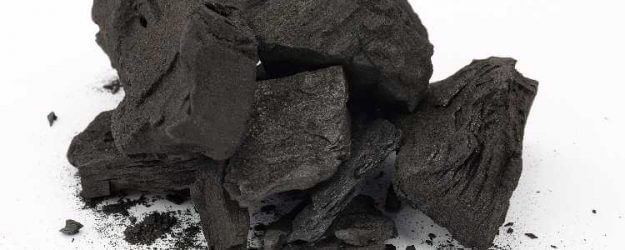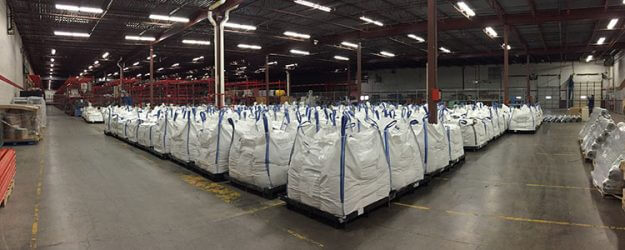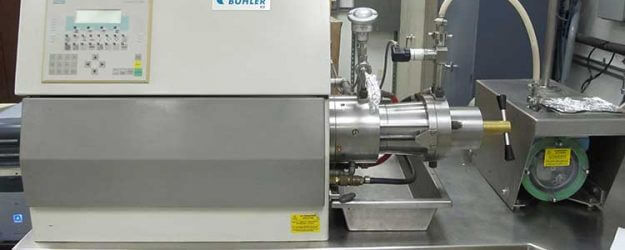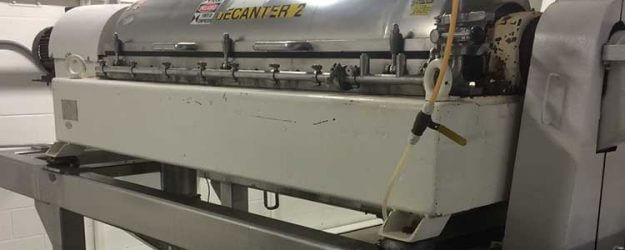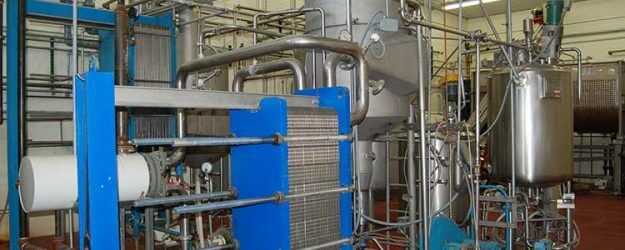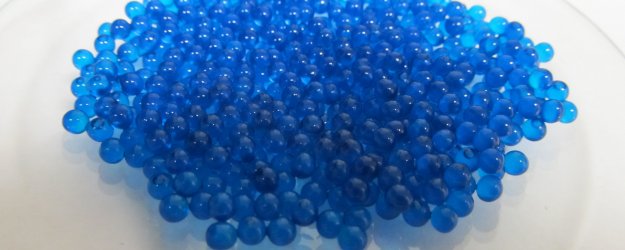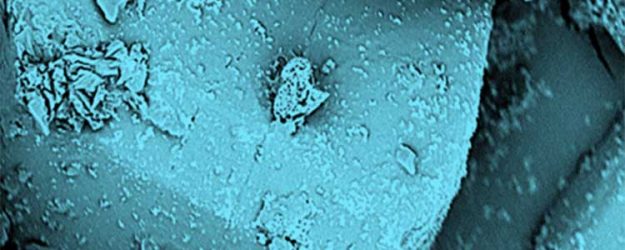Spheroidization can fine-tune the particle morphology of meltable materials to improve powder flow and surface coatings, while avoiding melt processing and prolonged heat exposure.
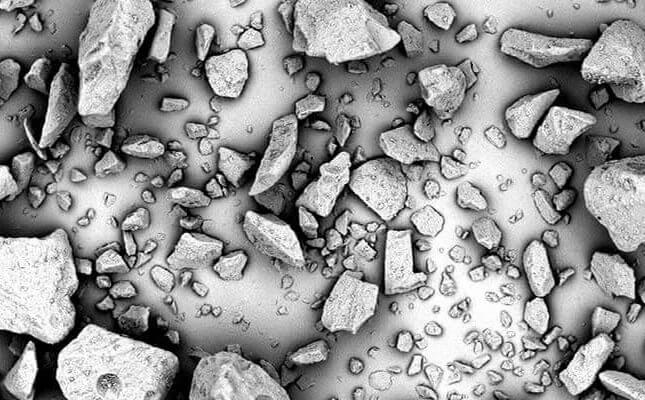
What is Spheroidization?
Spheroidization is a process which can improve powder flow characteristics and surface coatings by fine-tuning the particle morphology of thermoplastics or meltable materials. Particle surfaces are rapidly heated and then cooled, allowing the material to partially melt and form a smooth surface. Spherical particles can be created from irregularly shaped raw materials, such as milled products. A discontinuous, meltable coating on the surface of a particle can also be improved via spheroidization. If a particle’s core is meltable, it can soften allowing the coating to become more strongly adhered to the surface.
During processing, powders are entrained in an air stream using a venturi pump and are directed into the spheroidizing chamber through a nozzle. Hot air streams are angled at the incoming particles to rapidly heat and partially melt the material. The modified particles are then collected using a cyclone separator, often with a vibratory screener below the cyclone to allow for in-process product classification.
Spheroidization avoids melt processing and liquid handling while retaining the original feed particle size distribution. Materials that are sensitive to high heat or prolonged heat exposure can be processed via spheroidization. Particles are smoothed and made spherical, thus minimizing surface area and improving powder flow. Powder characteristics can be altered by adjusting temperature, air flows and using multiple passes to achieve the desired product.
